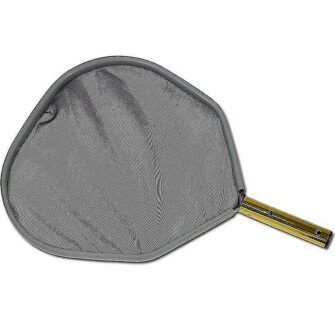-
×
 Landing net surface AL PRO
1× € 11,00
Landing net surface AL PRO
1× € 11,00
Subtotal: € 11,00
An intelligent filtration time control ensures a hygienic swimming pool water quality, clarity and temperature. All this with a so low possible energy consumption and easy to use. A good adjustment of the filter time will save you a lot of headaches.
The challenge is to filter pump to run just the number of hours required for crystal clear and hygienic pool water, with the lowest possible energy costs. The number of hours of circulation must be sufficient to reach and maintain the set pool water temperature.
We have made the filtration time of our pool pump dependent on the temperature of the pool water. This ensures that when the pool water is warmer, the pump will filter more around it faster chlorine consumption. This ensures that the pool water always approaches the set point of the pH and RX (chlorine value). Correct pH value ensures proper functioning of the chlorine, correct RX value ensures proper disinfection. This results in crystal clear pool water.
During the winter period, the circulation time will adjust as the pool water temperature drops. The lower the temperature, the smaller the risk of bacteria or algae. If the pool water temperature drops below 5°C, the pump will automatically operate continuously. This prevents frost damage.
By linking the filtration time to the temperature of the water, the pump will circulate less quickly as the temperature drops. This ensures a considerably lower electricity consumption. So it will electrical consumption of your circulation pump 28°C 7% reduce and with 25°C even 17%. This only by reduced filtration time, related to the temperature of the pool water!
In the summer, the temperature of the swimming pool water will also rise, but so will the breakdown of the chlorine by the UV radiation from the sun. The swimming pool will also be used more, so that the roller shutter will be open longer and there will be a higher consumption of chlorine and stronger water evaporation. If the filtration time does not increase, the filter system will struggle to keep the pool water clear! The chlorine pump no longer reaches the set point of the RX value (= too little chlorine). Bacteria and algae are given free reign and the pool water becomes cloudy or, even worse, green. By linking the filtration time to the temperature of the pool water and increasing it when the temperature rises, we have succeeded in avoiding this problem. When the temperature of the pool water rises, our filter pump will filter longer and the pool water will remain crystal clear and hygienic.
READING TIP : The ABC of pool maintenance
It exists in the winter period risk of frost damage to the skimmers, pipes, overflow gutter, buffer tank or filter installation. To avoid this is our control box equipped with a frost protection. This will ensure that the circulation pump will circulate 24/24 if the temperature of the pool water drops below 5°C. On the one hand, you provide moving water that freezes less easily, and the water will remain above 0°C due to the constant temperature under the ground. The frost protection is integrated in the filtration time control of our swimming pool control box.
Since 2010, more and more frequency-controllede pool pumps installed. INTELLIFLO from Pentair was the first on the market. But in the meantime, all major brands have a VS (Variable Speed) pump. Hayward with his TRISTAR VST and SPECK pumps with the BADU 90 Eco USA. We have also integrated this (yes!) into our control panel. Our filtration pump can be equipped with a frequency control. A frequency-controlled swimming pool pump ensures a fixed energy saving of 60 – 80% on the electricity consumption of your filtration pump. The filtration pump is the largest consumer of the filter installation.
However, 90% of the control cabinets are still equipped with analog or digital timers. This causes a lot of problems. For example, setting a digital timer is no sinecure and the clock of the analog timer stops if the electricity fails. In addition, as a customer you should think about all the previous points if you want everything to work safely and optimally. Let the pump filter continuously if there is a threat of frost, increase the number of hours when it gets warm, decrease the number of hours in the winter period, ... Chances are quite real that you are hopelessly chasing after the facts.